Toilet Problems And How to fix them
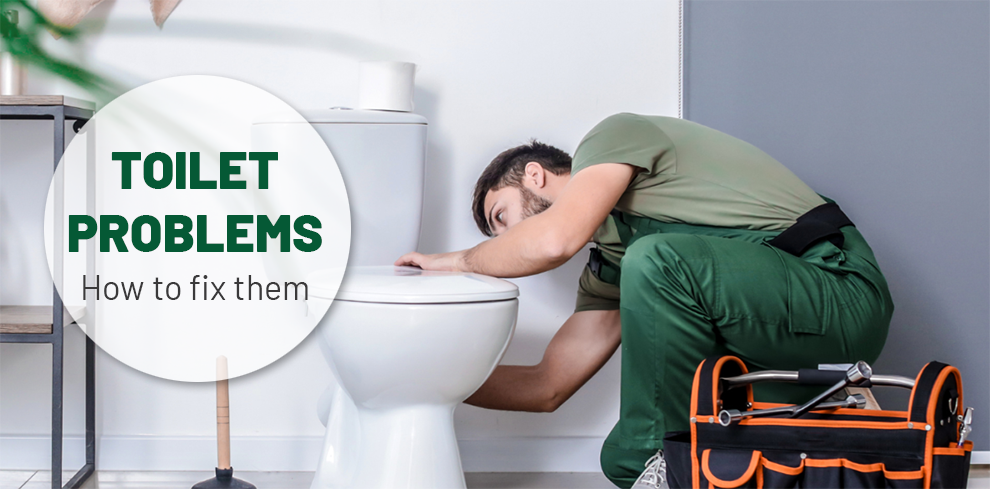
Toilet problems can be a nuisance and an inconvenience, but they are often easy to fix with a little bit of knowledge. Common issues include clogs, leaks, and running toilets. Clogs can usually be removed with a plunger or a toilet auger, while leaks can often be fixed by replacing a worn-out flapper or adjusting the water level in the tank. Running toilets can often be fixed by adjusting the flapper or replacing the fill valve. With a few simple tools and a bit of know-how, most toilet problems can be fixed quickly and easily.
Fixing toilet problems yourself can save you money and time as it eliminates the need to call a plumber. Additionally, it allows you to take control of the situation and fix it at your convenience rather than waiting for a plumber’s availability. It also empowers you to keep an eye on your toilets and maintain them regularly.
10 most common toilet problems every household normally observes are:
- Clogged toilet
- Running toilet
- Leaky toilet
- Weak flush
- Slow-filling tank
- Constantly refilling tank
- Toilet bowl not filling
- Toilet won’t stop running
- Toilet overflowing
- Toilet making strange noises
Here’s what normally they look like and fixing them yourself hacks:
Clogged toilet
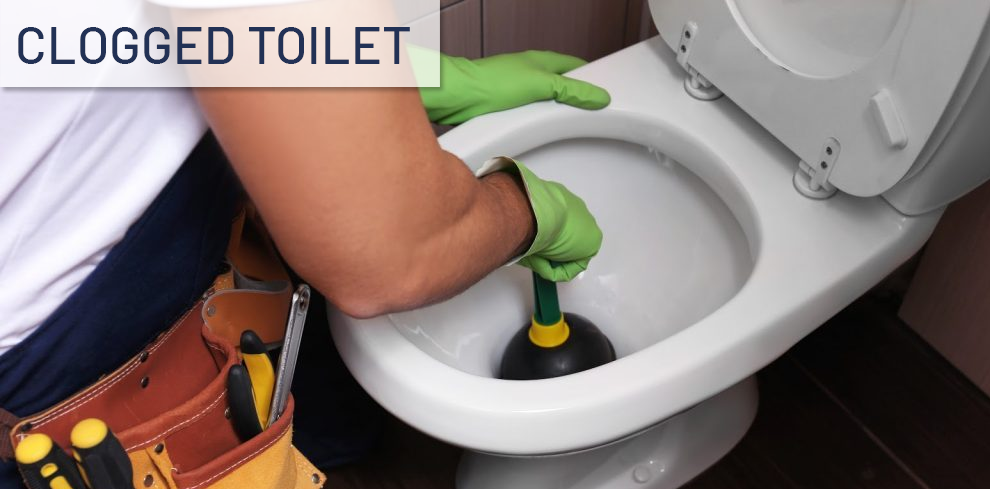
A clogged toilet is a common problem that occurs when the pipes become blocked with waste, tissue paper, or other materials. This can cause the toilet to overflow or prevent water from flowing properly through the pipes. Clogs can also cause a weak flush, which means the toilet may not be able to clear waste completely. This can lead to unpleasant odors and unsanitary conditions. Clogged toilets can be caused by a variety of factors, such as flushing non-degradable items, using too much toilet paper, or a build-up of waste in the pipes.
To fix a clogged toilet problem, you can follow these simple methods:
Use a plunger
The most common and easiest way to unclog a toilet is by using a plunger. Place the plunger over the opening of the drain and push down firmly several times to create suction. Repeat this process until the clog is removed.
Use a toilet auger
A toilet auger, also known as a plumbing snake, is a long, flexible cable with a small auger on the end. It can be inserted into the toilet to break up and remove clogs.
Use a bucket of hot water
If the clog is caused by a buildup of grease or oil, you can try pouring a bucket of hot water into the toilet bowl. The heat can help break down the grease and clear the clog.
Use a chemical clog remover
You can use chemical clog removers available in the market, however, it’s important to use it according to the manufacturer’s instructions and use it sparingly as it can be harsh on the pipes and may cause damage if used excessively
It’s important to understand that if the above steps don’t work, it’s best to call a plumber as the clog may be deep in the pipes and requires professional tools and knowledge to clear it.
Running toilet
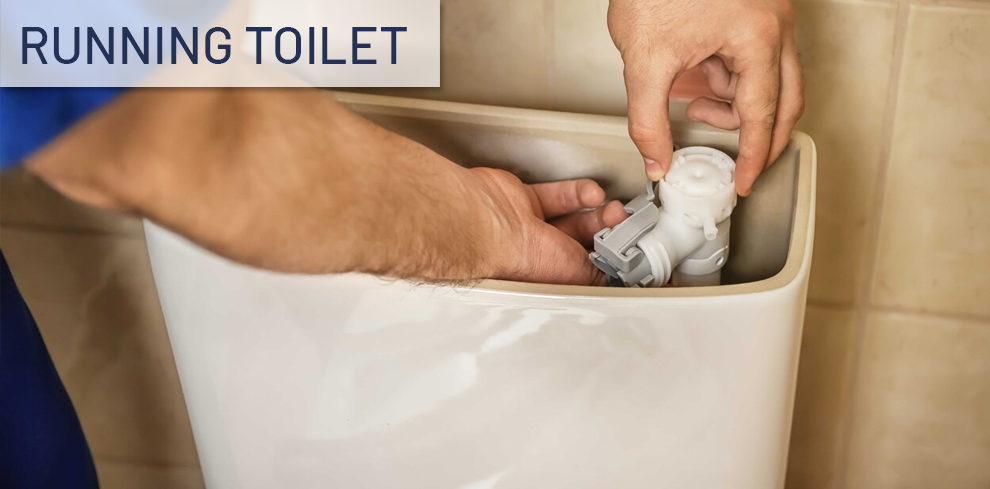
A running toilet is a problem where water continues to flow into the toilet tank after it has been flushed. This can cause the toilet to continue to make noise and can waste a lot of water over time. A running toilet can be caused by a few different factors:
A faulty flapper
The flapper is a rubber valve that sits at the bottom of the toilet tank and controls the flow of water into the bowl. If the flapper is worn out or not seating properly, it can cause water to leak into the bowl and cause the toilet to run.
To fix a faulty flapper causing a running toilet, you can follow these steps:
1. Turn off the water supply to the toilet: Locate the water supply valve, usually located behind or next to the toilet, and turn it off.
2. Flush the toilet and hold the handle down: This will remove most of the water from the tank.
3. Remove the old flapper: To do this, you will need to detach the chain that connects the flapper to the flush handle and remove the flapper from the flush valve.
4. Inspect the flush valve: Make sure that the flush valve is not dirty or corroded. Clean it if necessary.
5. Install the new flapper: Place the new flapper over the flush valve and attach the chain to the flush handle.
6. Turn the water supply back on: Turn the water supply valve back on and wait for the toilet tank to fill up.
7. Test the toilet: Flush the toilet and make sure that the flapper is working properly and the water stops flowing into the tank after the flush.
8. Adjust the chain length if necessary: The chain should be tight enough to keep the flapper closed, but not so tight that it prevents the flapper from opening fully.
If you have trouble with this process, it’s best to consult the instructions that come with the replacement flapper, or call a plumber for assistance.
A malfunctioning fill valve
The fill valve is responsible for refilling the toilet tank with water after a flush. If the fill valve is not working properly, it can cause water to continue flowing into the tank and cause the toilet to run.
To fix a malfunctioning fill valve causing a running toilet, you can follow these steps:
1. Turn off the water supply to the toilet: Locate the water supply valve, usually located behind or next to the toilet, and turn it off.
2. Flush the toilet and hold the handle down: This will remove most of the water from the tank.
3. Remove the old fill valve: To do this, you will need to remove the water supply line from the valve and remove the mounting nut that holds the valve in place.
4. Inspect the water supply line: Make sure that the water supply line is not clogged or damaged. Clean or replace it if necessary.
5. Install the new fill valve: Insert the new fill valve into the toilet tank and secure it with the mounting nut. Attach the water supply line to the new fill valve.
6. Turn the water supply back on: Turn the water supply valve back on and wait for the toilet tank to fill up.
7. Test the toilet: Flush the toilet and make sure that the fill valve is working properly and the water stops flowing into the tank after the flush.
8. Adjust the water level if necessary: The water level in the toilet tank should be set at the correct level, if it’s too high or too low, it may cause the toilet to run
It’s important to follow the manufacturer’s instructions for the new fill valve and if you feel uncomfortable or not confident in doing this, it’s best to call a plumber for assistance.
An incorrect water level
The water level in the toilet tank should be set at the correct level, if it’s too high or too low, it may cause the toilet to run
To fix an incorrect water level causing a running toilet, you can follow these steps:
1. Locate the fill valve: The fill valve is responsible for refilling the toilet tank with water after a flush. It is typically located at the bottom of the tank.
2. Check the water level: Look at the water level in the tank. It should be at the level marked on the fill valve or about one inch below the top of the overflow tube.
3. Adjust the water level: If the water level is too high or too low, you can adjust it by turning the adjustment screw on the fill valve. Turning it clockwise will lower the water level, and turning it counter-clockwise will raise the water level.
4. Test the toilet: Flush the toilet and make sure that the fill valve is working properly and the water stops flowing into the tank after the flush.
5. Check for leaks: Observe the toilet for a few minutes to make sure there are no leaks around the fill valve or the water supply line.
It’s important to keep the water level at the correct level to prevent the toilet from running. If you are not comfortable adjusting the water level, it’s best to call a plumber for assistance.
A problem with the float ball
The float ball is a ball-shaped device that floats on top of the water in the toilet tank. It tells the fill valve when to stop refilling the tank. A problem with the float ball can cause the toilet to run.
To fix a problem with the float ball causing a running toilet, you can follow these steps:
1. Turn off the water supply to the toilet: Locate the water supply valve, usually located behind or next to the toilet, and turn it off.
2. Flush the toilet and hold the handle down: This will remove most of the water from the tank.
3. Locate the float ball: The float ball is a ball-shaped device that floats on top of the water in the toilet tank. It tells the fill valve when to stop refilling the tank.
4. Check the float ball: Make sure that the float ball is not damaged or leaking. If it is, replace it with a new one.
5. Adjust the float ball: If the float ball is not damaged, but the toilet is still running, you can adjust the height of the float ball by bending the arm that holds it in place. Lowering the float ball will cause the fill valve to turn off sooner, and raising it will cause the fill valve to turn off later.
6. Turn the water supply back on: Turn the water supply valve back on and wait for the toilet tank to fill up.
7. Test the toilet: Flush the toilet and make sure that the float ball is working properly and the water stops flowing into the tank after the flush.
8. Check for leaks: Observe the toilet for a few minutes to make sure there are no leaks around the fill valve or the water supply line.
If you are not comfortable adjusting the float ball, it’s best to call a plumber for assistance.
Leaky toilet
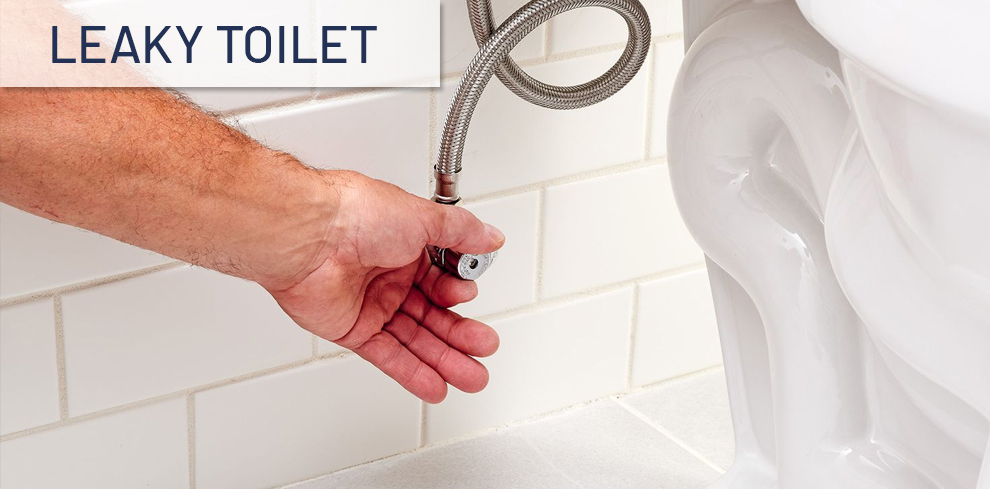
A leaky toilet is a common plumbing issue that occurs when water is constantly running into the toilet bowl, even when the toilet is not in use. This can be caused by a variety of factors, such as a malfunctioning flapper valve, a worn out fill valve, or a damaged flush valve. Leaky toilets can waste a significant amount of water and increase a household’s water bill, and should be repaired as soon as possible.
Here are a few steps you can take to fix a leaky toilet problem without calling a plumber:
Check the flapper valve
The flapper valve is located at the bottom of the toilet tank and is responsible for controlling the flow of water from the tank to the bowl. If the flapper valve is not sealing properly, water will continue to flow into the bowl. To check the flapper valve, place a few drops of food coloring into the toilet tank. If the color appears in the bowl within 30 minutes, the flapper valve is likely the problem.
Adjust or replace the flapper valve
If the flapper valve is the problem, try adjusting it by repositioning the chain or replacing the flapper entirely.
Check the fill valve
The fill valve is responsible for refilling the toilet tank after a flush. If the fill valve is malfunctioning, it may cause water to continuously run into the toilet bowl. To check the fill valve, listen for a hissing noise coming from the toilet tank.
Adjust or replace the fill valve
If the fill valve is the problem, try adjusting the water level in the tank by turning the adjustment screw. If this doesn’t work, you may need to replace the fill valve.
Check the flush valve
The flush valve is located at the bottom of the toilet tank and controls the flow of water from the tank to the bowl during a flush. If the flush valve is damaged, it can cause water to leak into the bowl. If the flush valve is the problem, you may need to replace it.
It is important to note that these are general steps and the problem may be more complex or specific to your toilet type. It’s recommended to consult the toilet manual or call a plumber if you are unsure about the repair.
Weak flush
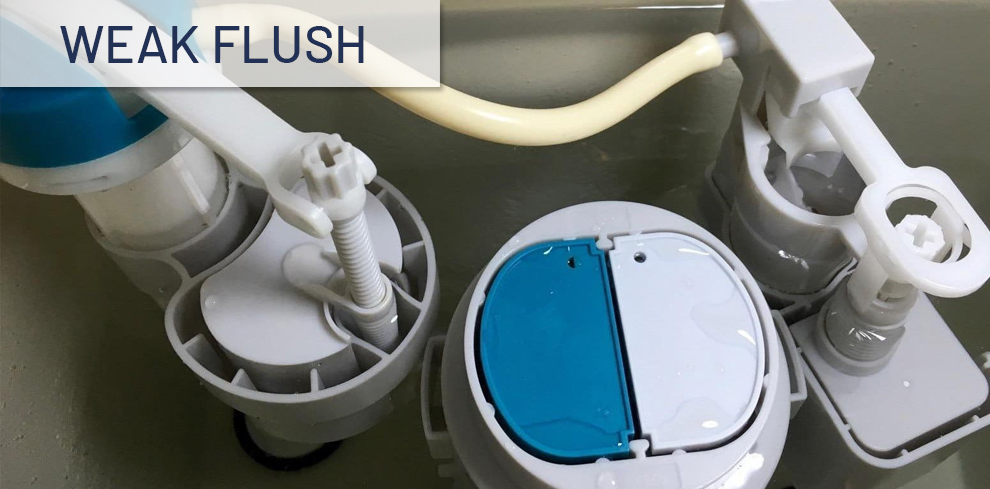
A weak flush is a common toilet issue that occurs when the toilet is not flushing properly and the bowl does not empty completely. This can be caused by a variety of factors, such as a clogged toilet, a malfunctioning flapper valve, or a problem with the fill valve.
Here are a few possible causes of a weak flush:
1. Clogged toilet: A clogged toilet can cause the bowl to not empty completely, leading to a weak flush.
2. Inadequate water level in the tank: If the water level in the tank is too low, the toilet may not flush properly.
3. Malfunctioning flapper valve: If the flapper valve is not sealing properly, water may not flow into the bowl quickly enough to create a strong flush.
4. Problem with the fill valve: If the fill valve is malfunctioning, it may not be refilling the tank with enough water to create a strong flush.
5. Obstruction in the trapway: The trapway is the pipe that connects the toilet to the sewer line. If this pipe becomes blocked, it can prevent the bowl from emptying completely, leading to a weak flush.
6. Worn out or inefficient toilet: Old toilets may not have the power to flush effectively, or may not have the design to handle waste and toilet paper effectively.
To fix the weak flush problem, try to identify the cause and take the appropriate action, such as unclogging the toilet, adjusting the water level in the tank, or replacing a faulty part.Here are a few steps you can take to fix a weak flush toilet problem:
Check for clogs
A clogged toilet can cause a weak flush. To check for clogs, use a plunger to try and remove the blockage. Be sure to use a toilet auger if the plunger doesn’t work.
Adjust the water level in the tank
If the water level in the tank is too low, the toilet may not flush properly. To adjust the water level, locate the fill valve, and turn the adjustment screw clockwise to raise the water level.
Check the flapper valve
The flapper valve is located at the bottom of the toilet tank and controls the flow of water from the tank to the bowl. If the flapper valve is not sealing properly, water may not flow into the bowl quickly enough to create a strong flush. To check the flapper valve, place a few drops of food coloring into the toilet tank. If the color appears in the bowl within 30 minutes, the flapper valve is likely the problem.
Adjust or replace the flapper valve
If the flapper valve is the problem, try adjusting it by repositioning the chain or replacing the flapper entirely.
Check the fill valve
The fill valve is responsible for refilling the toilet tank after a flush. If the fill valve is malfunctioning, it may cause water to continuously run into the toilet bowl. To check the fill valve, listen for a hissing noise coming from the toilet tank.
Adjust or replace the fill valve
If the fill valve is the problem, try adjusting the water level in the tank by turning the adjustment screw. If this doesn’t work, you may need to replace the fill valve.
Check the trapway
The trapway is the pipe that connects the toilet to the sewer line. If this pipe becomes blocked, it can prevent the bowl from emptying completely, leading to a weak flush. To check the trapway, remove the toilet tank lid and look inside. If you see any blockages, use a plumbing snake to remove them.
Replace the Toilet
If the above steps don’t work, the toilet may be worn out or have an inefficient design. Replacing the toilet with a newer, more efficient one may fix the weak flush problem.
If the problem persists or you are unsure about the cause, it is recommended to call a plumber for a professional diagnosis and repair.
Slow-filling tank
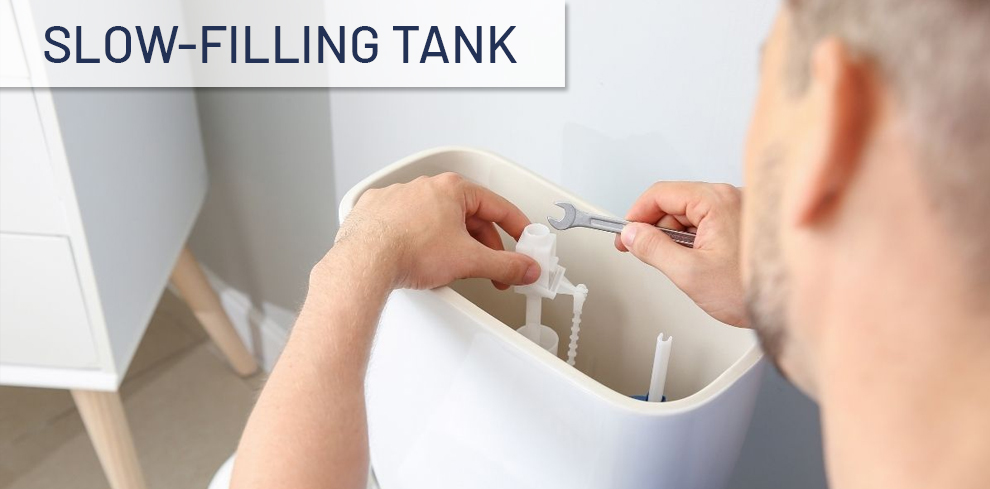
A slow filling tank toilet problem occurs when the toilet tank takes a long time to fill after a flush. This can be caused by a variety of factors, such as a malfunctioning fill valve, a clogged water supply line, or a problem with the water pressure. This problem can cause the toilet to not work properly and can be frustrating for users.
Here are a few possible causes of a slow filling tank toilet problem:
Malfunctioning fill valve
The fill valve is responsible for refilling the toilet tank with water after a flush. If the fill valve is malfunctioning, it can cause the tank to fill slowly.
Clogged water supply line
If the water supply line is clogged, it can restrict the flow of water to the toilet, causing the tank to fill slowly.
Low water pressure
If the water pressure in your home is low, it can cause the toilet tank to fill slowly.
Mineral buildup
Hard water can cause mineral buildup in the fill valve, reducing its efficiency and causing the tank to fill slowly.
Worn out or inefficient toilet
An old toilet may not have the power to refill the tank effectively, or may not have the design to handle the water effectively.
To fix a slow filling tank toilet problem, you can try the following steps:
Check the fill valve
The fill valve is located at the bottom of the toilet tank and is responsible for refilling the tank with water after a flush. If the fill valve is malfunctioning, it can cause the tank to fill slowly.
Clean or Replace the fill valve
If the fill valve is clogged or malfunctioning, try cleaning it by disassembling it, removing the debris, and putting it back together. If it still not working, you may need to replace it.
Check the water supply line
Make sure the water supply line is not clogged or leaking. If it is, you may need to replace it.
Check the water pressure
If the water pressure in your home is low, it can cause the toilet tank to fill slowly. Contact your water provider to have them check the pressure.
Replace the Toilet
If the above steps don’t work, the toilet may be worn out or have an inefficient design. Replacing the toilet with a newer, more efficient one may fix the slow filling tank problem.
It is important to note that these are general steps and the problem may be more complex or specific to your toilet type. It’s recommended to consult the toilet manual or call a plumber if you are unsure about the repair.
Constantly refilling tank
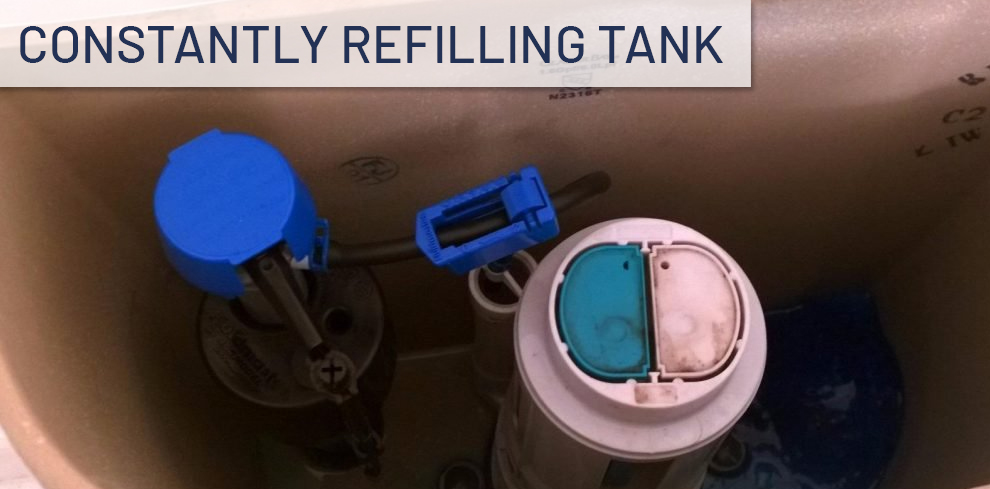
A constantly refilling tank toilet problem occurs when the toilet tank keeps refilling with water even when it is not in use. This can be caused by a variety of factors, such as a malfunctioning fill valve, a problem with the flapper valve, or a leak in the toilet tank. This problem can cause the toilet to waste water and increase a household’s water bill.
Here are a few possible causes of a constantly refilling tank toilet problem:
Malfunctioning fill valve
The fill valve is responsible for refilling the toilet tank with water after a flush. If the fill valve is malfunctioning, it can cause the tank to constantly refill with water.
Leaky flapper valve
The flapper valve is located at the bottom of the toilet tank and controls the flow of water from the tank to the bowl. If the flapper valve is not sealing properly, water can leak from the tank into the bowl, causing the tank to constantly refill.
Leak in the toilet tank
A leak in the toilet tank can cause the tank to constantly refill with water.
Worn out or inefficient toilet
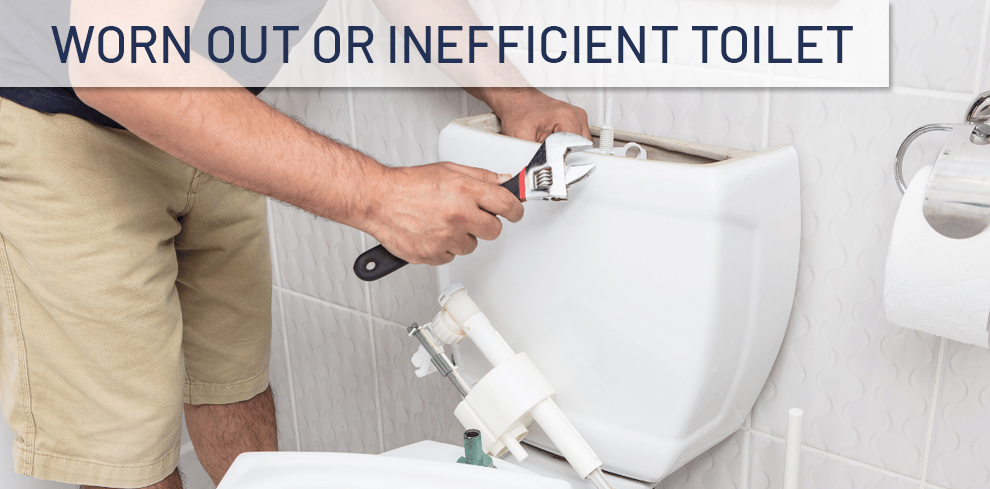
An old toilet may not have the power to control the water flow effectively, or may not have the design to handle the water effectively.
To fix a constantly refilling tank toilet problem, you can try the following steps:
Check the fill valve
The fill valve is located at the bottom of the toilet tank and is responsible for refilling the tank with water after a flush. If the fill valve is malfunctioning, it can cause the tank to constantly refill with water.
Adjust or Replace the fill valve
If the fill valve is the problem, try adjusting the water level in the tank by turning the adjustment screw. If this doesn’t work, you may need to replace the fill valve.
Check the flapper valve
The flapper valve is located at the bottom of the toilet tank and controls the flow of water from the tank to the bowl. If the flapper valve is not sealing properly, water can leak from the tank into the bowl, causing the tank to constantly refill.
Adjust or Replace the flapper valve
If the flapper valve is the problem, try adjusting it by repositioning the chain or replacing the flapper entirely.
Check for leaks in the tank
Look for any visible leaks or water around the base of the toilet or on the floor.
Replace the Toilet
If the above steps don’t work, the toilet may be worn out or have an inefficient design. Replacing the toilet with a newer, more efficient one may fix the constantly refilling tank problem.
It is important to note that these are general steps and the problem may be more complex or specific to your toilet type. It’s recommended to consult the toilet manual or call a plumber if you are unsure about the repair.Toilet bowl not filling
Toilet won’t stop running
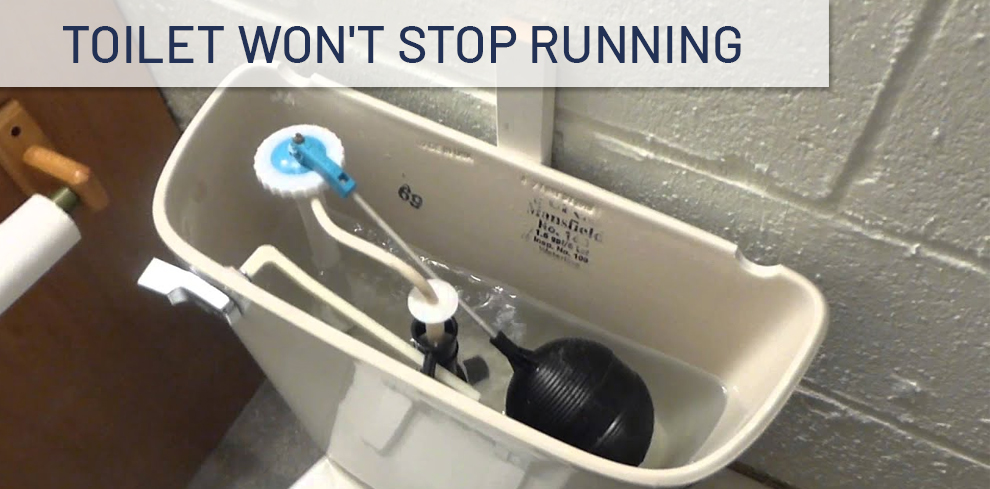
A toilet that won’t stop running is a common plumbing issue that occurs when the water in the toilet tank continues to flow into the bowl, even when the toilet is not in use. This can be caused by a variety of factors, such as a malfunctioning flapper valve, a worn out fill valve, or a damaged flush valve. A running toilet can waste a significant amount of water and increase a household’s water bill, and should be repaired as soon as possible.
Here are a few possible causes of a toilet that won’t stop running:
Malfunctioning flapper valve
The flapper valve is located at the bottom of the toilet tank and controls the flow of water from the tank to the bowl. If the flapper valve is not sealing properly, water will continue to flow into the bowl, causing the toilet to run.
Worn out fill valve
The fill valve is responsible for refilling the toilet tank with water after a flush. If the fill valve is worn out, it may not shut off properly, causing water to constantly flow into the toilet bowl.
Damaged flush valve
The flush valve is located at the bottom of the toilet tank and controls the flow of water from the tank to the bowl during a flush. If the flush valve is damaged, it can cause water to leak into the bowl, causing the toilet to run.
Improperly adjusted float
The float is a device that controls the water level in the tank. If the float is not adjusted properly, it can cause the toilet to run.
Obstruction in the toilet
An obstruction in the toilet can cause the water to flow constantly into the bowl.
To fix a toilet that won’t stop running, try to identify the cause and take the appropriate action, such as adjusting or replacing the flapper valve, fill valve, or flush valve. If the problem persists or you are unsure about the cause, it is recommended to call a plumber for a professional diagnosis and repair.
Toilet overflowing
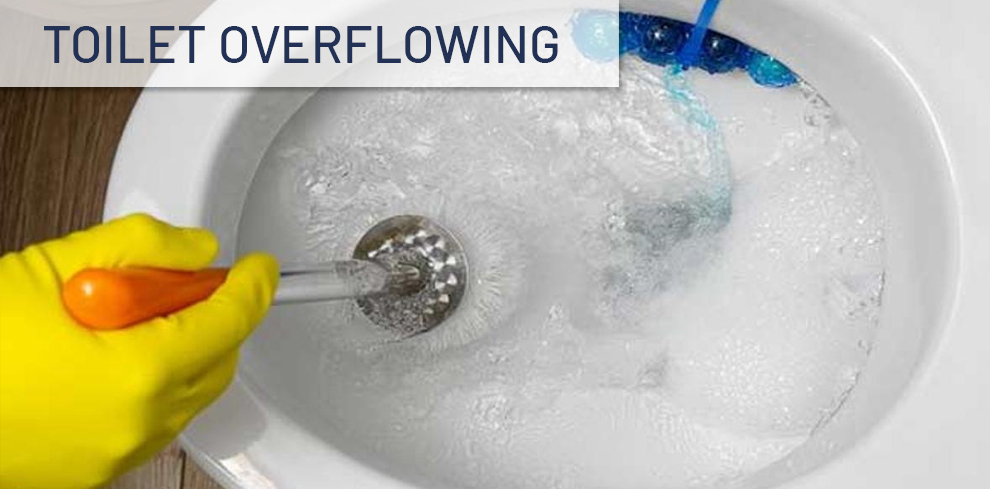
An overflowing toilet is a serious plumbing issue that occurs when the water in the toilet bowl rises and spills onto the floor. This can be caused by a variety of factors, such as a clogged toilet, a malfunctioning flapper valve, or a problem with the fill valve. An overflowing toilet can cause water damage, create a health hazard and should be addressed immediately.
Here are a few possible causes of a toilet overflowing:
Clogged toilet
A clogged toilet can cause the water in the bowl to rise and spill over the rim.
Blocked drain
A blockage in the drain can cause the water in the bowl to rise and spill over the rim.
Malfunctioning flapper valve
The flapper valve is located at the bottom of the toilet tank and controls the flow of water from the tank to the bowl. If the flapper valve is not sealing properly, water can flow into the bowl too quickly, causing the water to rise and spill over the rim.
Problem with the fill valve
The fill valve is responsible for refilling the toilet tank with water after a flush. If the fill valve is malfunctioning, it can cause water to flow into the bowl too quickly, causing the water to rise and spill over the rim.
Improperly adjusted float
The float is a device that controls the water level in the tank. If the float is not adjusted properly, it can cause the water level to rise too high in the bowl and overflow.
To fix a toilet overflowing, try to identify the cause and take the appropriate action, such as unclogging the toilet, adjusting or replacing the flapper valve, fill valve or the float. In case of emergency, you can turn off the water supply to the toilet by turning the valve clockwise located behind the toilet, near the floor or the wall. It is important to call a plumber to fix the problem and prevent it from happening again.
Toilet making strange noises
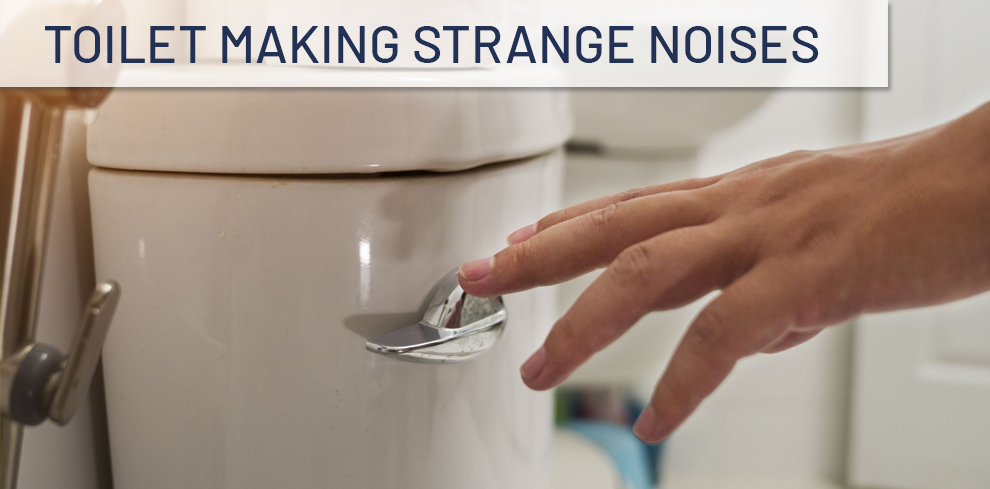
A toilet making strange noises is a common plumbing issue that can be caused by a variety of factors. These noises can be loud, continuous, or intermittent and can be caused by problems with the fill valve, the flush valve, or the pipes. This problem can be annoying and should be addressed as soon as possible.
Here are a few possible causes of a toilet making strange noises:
Running water
A loud, continuous noise can be caused by water running through the pipes, which can be caused by a leak or a malfunctioning fill valve.
High-pressure water
If the water pressure in your home is too high, it can cause the pipes to vibrate and make noise.
Mineral buildup
Hard water can cause mineral buildup in the pipes and valves, reducing their efficiency and causing strange noises.
Loose parts
If parts inside the tank or the bowl are loose, it can cause the toilet to make noise when the water is running or when the toilet is flushed.
Worn out or inefficient toilet
An old toilet may not have the design or the parts to handle water effectively, or may not have the power to flush or refill the tank effectively, causing strange noises.
To fix a toilet making strange noises, try to identify the cause and take the appropriate action, such as adjusting the water pressure, cleaning or replacing the fill valve, flush valve, or the loose parts. If the problem persists or you are unsure about the cause, it is recommended to call a plumber for a professional diagnosis and repair.
Toilet problems such as leaks, weak flushes, slow filling tanks, running toilets, overflowing and strange noises can be caused by various factors, some of them are easy to fix by adjusting or replacing parts, others need a professional plumber. It is important to identify the problem and take the appropriate action to fix it and prevent it from happening again.
Frequently asked questions:
What causes common toilet problems?
Common toilet problems such as leaks, weak flushes, slow filling tanks, running toilets, overflowing and strange noises can be caused by a variety of factors such as a clogged toilet, malfunctioning flapper valve, problem with the fill valve, worn out or inefficient toilet, mineral buildup, high water pressure, and improper adjustments of the float.
How do I maintain my toilet?
To maintain your toilet, you should:
1. Clean it regularly: Scrub the bowl, seat, and lid with a toilet brush and cleaning solution to remove stains and bacteria.
2. Check for leaks: Make sure there are no leaks around the base of the toilet or from the tank. A small leak can waste a lot of water over time.
3. Check the flapper: Make sure the flapper valve at the bottom of the tank is working properly. If it’s worn or not sealing properly, it can cause the toilet to run.
4. Check the fill valve: Make sure the fill valve is working properly. If it’s not, the tank may not fill up properly, causing the toilet to run.
5. Check the wax ring: Check the wax ring, which is the seal between the toilet and the drain, to make sure it’s not cracked or broken. If it is, it will need to be replaced.
6. Replace the toilet bowl cleaner: Replace the cleaner tablet or drop in the toilet tank.
7. Change the water in the tank: Change the water in the tank every six months.
How do I know where my toilet is leaking from?
To determine where your toilet is leaking from, you can perform a few simple tests. First, check the tank for any visible leaks or cracks. Next, put a few drops of food coloring in the tank and wait 15 minutes. If the color appears in the bowl, the leak is likely coming from the flapper valve at the bottom of the tank. If the color does not appear in the bowl, the leak may be coming from the fill valve or the supply line. Another test you can do is to place a few sheets of toilet paper or a piece of cardboard around the base of the toilet and check back in an hour to see if there is any moisture or water. This will help you to locate where the leak is coming from.
Is it economical to fix my toilet problems myself?
It can be economical to fix toilet problems yourself, depending on the issue. Some common toilet problems, such as a running toilet or a clogged drain, can be relatively easy to fix and only require a few basic tools. However, other problems, such as a broken wax ring or a cracked porcelain, may be more difficult to fix and may require specialized tools or expertise.
If you are unsure of how to fix a particular problem or are not comfortable working with plumbing, it may be more economical to hire a professional plumber to fix the issue for you.
